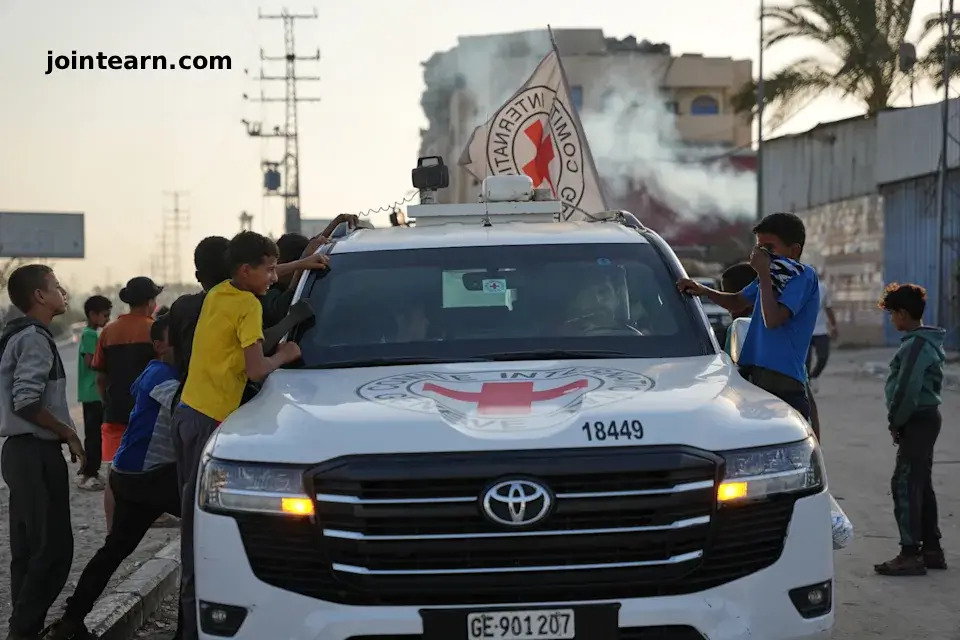
DEIR AL-BALAH, Gaza Strip — October 31, 2025 — Hospital officials in Gaza confirmed Friday that Israel has handed over the bodies of 30 Palestinians, a day after Palestinian militants returned the remains of two Israeli hostages, signaling tentative progress in the Israel-Hamas ceasefire agreement that has been under strain amid ongoing airstrikes and political tensions.
Medical staff at Nasser Hospital in the southern Gaza city of Khan Younis said they received the bodies but have not yet been able to determine their identities or conditions. Officials noted that limited access to DNA testing kits has made it difficult to identify many of the deceased, complicating efforts to notify families and process burials.
Ongoing Exchange of Remains Reflects Fragile Progress
The exchange of remains is being viewed by analysts and diplomats as a sign that both sides are still adhering — however tenuously — to the terms of the ceasefire brokered by Egypt and Qatar. The truce, which began on October 10, 2025, aims to wind down more than two years of war that has left Gaza devastated and claimed tens of thousands of lives.
According to Palestinian officials, Israel has now returned the bodies of 225 Palestinians since the ceasefire began, though the Israeli government has not released details about the identities or circumstances of their deaths. It remains unclear whether the latest bodies belonged to individuals killed during the October 7, 2023 Hamas attack, those who died in Israeli custody, or casualties recovered from battle zones inside Gaza.
Before Friday’s exchange, Israel had already handed over 195 Palestinian bodies to Gaza authorities, part of ongoing negotiations that are being described as a “confidence-building measure” by mediators.
Israel Confirms Identity of Two Returned Hostages
Late Thursday, Israeli Prime Minister Benjamin Netanyahu’s office confirmed that the bodies of two hostages — Sahar Baruch and Amiram Cooper — were among those returned by Hamas. Both men were captured during the October 7, 2023 attacks that triggered the war.
Baruch, 25, had been preparing to begin a degree in electrical engineering when he was abducted from Kibbutz Be’eri. His brother, Idan, was killed in the same attack. The Israeli military announced three months later that Sahar was killed during a failed rescue attempt.
Cooper, 84, was an economist and a founding member of Kibbutz Nir Oz. He was taken hostage along with his wife, Nurit, who was released after 17 days in captivity. Israeli authorities confirmed in June 2024 that Cooper had been killed in Gaza.
Hamas has now returned the remains of 17 Israeli hostages since the truce began, with 11 more expected to be handed over in the coming days under the ongoing ceasefire arrangement.
Ceasefire Under Strain as Deadlines Loom
While the exchange of remains represents a modest step forward, U.S. officials warned that the ceasefire remains fragile. A senior American diplomat told reporters that Hamas was given a 24-hour deadline to withdraw its remaining fighters from a designated “yellow zone” within Gaza or risk renewed Israeli military action. The warning, relayed through Egypt and Qatar, expired Thursday.
“Israel will enforce the ceasefire and engage Hamas targets behind the yellow line,” the U.S. official said on condition of anonymity, citing sensitive diplomatic discussions.
Despite international appeals for restraint, Israeli airstrikes continued in parts of northern Gaza earlier this week, killing dozens, according to the Gaza Health Ministry. The Israeli government insists that the operations targeted Hamas military infrastructure, while humanitarian groups warn that the strikes are endangering civilians and undermining ceasefire progress.
The Human Cost of Two Years of War
The current ceasefire follows a war that the United Nations and human rights groups describe as the deadliest and most destructive conflict ever fought between Israel and Hamas.
The conflict began when Hamas-led militants launched an unprecedented attack on Israel on October 7, 2023, killing about 1,200 people and taking 251 hostages.
Since then, Israel’s retaliatory offensive has killed more than 68,600 Palestinians, according to Gaza’s Health Ministry. The ministry, which operates under the Hamas-run administration, maintains detailed records that independent experts generally consider credible, though Israel disputes the figures and has not provided its own count.
Humanitarian conditions in Gaza remain dire. Hospitals, including Nasser Hospital and Al-Shifa Medical Complex, continue to struggle with power shortages, damaged infrastructure, and overwhelming casualties, even as international aid slowly trickles in under the fragile truce.
Regional and Diplomatic Context
The body exchange and ongoing hostage negotiations are part of a broader diplomatic effort involving Egypt, Qatar, and the United States aimed at stabilizing the ceasefire and preparing for post-war reconstruction. Mediators hope that the continued return of remains and hostages could pave the way for broader political talks about Gaza’s governance once fighting subsides.
Meanwhile, international attention remains focused on whether Israel and Hamas can maintain the truce amid mutual distrust, public anger, and military pressure from hardline factions on both sides.
“Each transfer — each name confirmed, each family notified — represents a step toward closure,” said one Egyptian diplomat familiar with the negotiations. “But the war’s wounds are deep, and trust is fragile.”
Conclusion
As Israel returns 30 more bodies to Gaza and receives two of its own hostages’ remains, the ceasefire between Israel and Hamas remains precarious but ongoing. The latest developments underscore both the human toll of the conflict and the delicate balance of diplomacy required to prevent a renewed cycle of violence in one of the world’s most volatile regions.
Leave a Reply